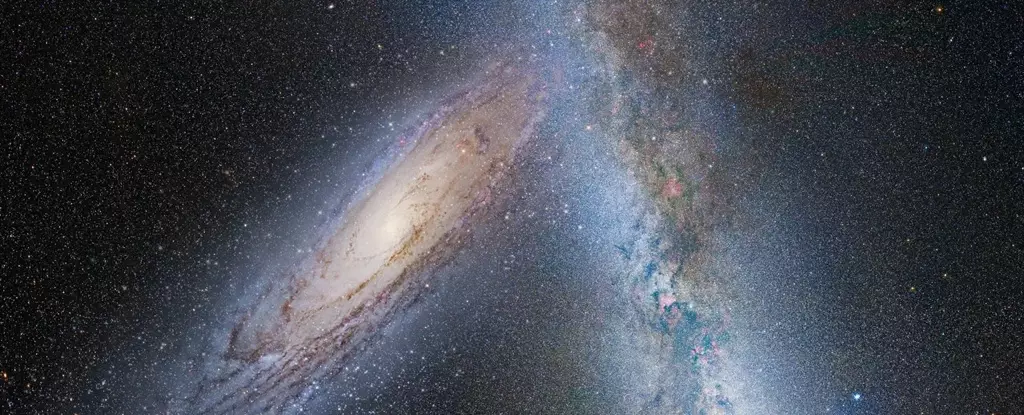The Milky Way and Andromeda galaxies, two of the largest galaxies in our Local Group, have long been predicted to collide with each other at some point in the future. However, a recent study conducted by researchers from the University of Helsinki and Durham University suggests that this collision may not be as inevitable as previously thought. By analyzing the motion and mass data of not only the Milky Way and Andromeda but also two other major players in our Local Group, the researchers found that the odds of a collision occurring within the next 10 billion years are close to 50/50.
Using data from the Gaia and Hubble space telescopes, the researchers created simulations that considered the movements of the Milky Way, Andromeda, the Large Magellanic Cloud (LMC), and the Triangulum Galaxy. Surprisingly, when the Milky Way and Andromeda were considered in isolation, a collision within the next 10 billion years occurred in less than half of the simulations. However, adding the other galaxies to the mix changed the probabilities significantly.
In scenarios where collisions do occur, the researchers found that the merger time is much longer than previously estimated, with a median merger time of over 7.6 billion years in the future. This means that we may have more time than we thought before the galaxies actually collide. The study concluded that there is an almost equal probability of either the widely publicized merger scenario or a scenario where the Milky Way and Andromeda continue to evolve independently.
Galactic Mergers: What to Expect
While the idea of galaxies colliding may sound apocalyptic, the reality is much less dramatic. Given the timescales involved (billions of years), it is unlikely that life on Earth or any other potential lifeforms would be significantly affected by the collision. Galaxies are mostly empty space, so the chances of stars actually colliding during a merger are extremely low. Instead, the gravitational interactions between stars would cause them to jostle into new orbits, leading to the formation of new stars and potentially transforming the galaxies into one giant elliptical galaxy.
Uncertainty and Further Research
Despite the findings of this study, the future evolution of the Milky Way and Andromeda galaxies remains uncertain. More research, including upcoming data releases from the Gaia mission, is needed to paint a clearer picture of what the future holds for these galaxies. While previous studies were confident in predicting a collision between the Milky Way and Andromeda, this new research highlights the unpredictability of such events in the vastness of space.
The collision between the Milky Way and Andromeda galaxies is not as set in stone as we once believed. The future evolution of these galaxies is still a mystery, with equal chances of a merger or continued independent evolution. As our understanding of the universe continues to grow, so too will our knowledge of the fates of these two massive galaxies.


Leave a Reply